
Vauxhall Insignia Grand Sport (2017-2022) review

At a glance
| Price new | £19,125 - £41,240 |
|---|---|
| Used prices | £4,004 - £24,746 |
| Road tax cost | £195 - £620 |
| Insurance group | 13 - 30 |
Get an insurance quote with

|
|
| Fuel economy | 31.7 - 61.4 mpg |
| Range | 436 - 873 miles |
| Miles per pound | 4.6 - 7.9 |
| Number of doors | 5 |
| View full specs for a specific version | |
Available fuel types
Petrol
Diesel
Pros & cons
- Low prices and running costs
- A fine, relaxed, motorway cruiser
- Excellent ride quality
- Drab interior
- Not dynamic to drive
- No hybrids
Vauxhall Insignia Grand Sport (17-22) rivals
Overview
The 2017 Vauxhall Insignia is a fantastic car that’s lacking just one thing – a premium badge on the bonnet. Because otherwise, it’s a top notch motor with plenty of premium quality, ability and refinement. It’s a model that deserved to sell far better than it did when new… but whose lack of a premium badge is now actually great news for used car buyers.
This is because prices are considerably more affordable than an Audi, BMW or Mercedes-Benz. You can buy an early car for less than £6,000 these days, whereas you’ll need upwards of £9,000 to buy a 2017 BMW 3 Series in a like-for-like spec. It’s likely to prove cheaper to run too, with lower insurance groups and more affordable servicing. The Vauxhall is no less reliable either – it’s generally robust and premium bands have lost some of their allure as shared components mean shared problems.
Vauxhall Insignia Mk2 Buying Guide
Although it’s largely known simply as Insignia, Vauxhall added ‘Grand Sport’ to the name when new, for unknown reasons. The Insignia Grand Sport is the five-door hatch, with the Insignia Sport Tourer being the estate version (also sold in super-rare Country Tourer guise – it’s easier to find the Mk1 Country Tourer).
Several recalls apply to the 2017-2022 Insignia Grand Sport (Z18), some of which may have popped up during lockdown and been overlooked. The status of outstanding recalls may be shown in the car’s online MOT history, which is always worth checking before viewing any Vauxhall Insignia for sale that’s made your shortlist.
The Insignia B represents one of the last big, sensible but not premium-branded cars, and the end of a long line of large, comfortable Vauxhalls. It’s understandable why you would want one – so here are 10 things to look out for if you’re considering bagging yourself a used bargain.
Insignia 2017-2022 known faults and common problems
1. Choose your trim and spec carefully.
Vauxhall offered an enormous array of trims with the 2017 Insignia, as you’ll discover when searching the classifieds. Design is entry grade, and has an OK spec including keyless entry, air con, electric front and rear windows plus 7.0-inch touchscreen with Apple CarPlay and Android Auto. But Design looks plain: SRi versions are favoured (there are several flavours, such as SRi Nav and SRi VX-Line) as they have a sportier appearance, while Elite Nav features all the goodies including a Bose stereo. A facelift in 2020 saw the front end tidied up and bright LED headlights standardised.
2. Complex line-up of engines – from GM and Peugeot
You might find the array of engines mentioned in the classifieds pretty baffling. Here’s a broad overview: you’ll find a 1.5-litre turbo petrol with 140hp or 165hp, a 1.6-litre with 200hp, a 1.6-litre turbo diesel with 110hp or 136hp, or a 2.0-litre with 170hp.
The 136hp diesel is very efficient and surprisingly effective. Rarer choices include a GSi with a 260hp petrol or 210hp biturbo diesel (with a nine-speed automatic gearbox), and a later 230hp petrol GSi: they all came with an auto and AWD. A later 122hp 1.5 diesel is worth a look too.
3. Buying an ex-rental car: pros and cons
The Vauxhall Insignia was a popular car with daily rental companies – and of course, with fleets. So long as they have a full and rigorous service history, there’s nothing wrong with such cars – so long as they don’t show signs of abuse.
The drive should be crisp, there shouldn’t be any rattles and the bodywork shouldn’t display any signs of touched-up dings and dents. If a car looks and feels tired, it’s best avoided.

When buying a car that’s been privately leased or on PCP with an unusually low mileage at its first MOT, check the condition of seats, steering wheel and pedals carefully and look at the date codes on the tyres to see if they have been changed – it could have been clocked to avoid excess mileage charges, and missed services as a result.
4. Checking the history
Service intervals are every 12 months or, in a nod to the car’s high-mileage abilities, every 20,000 miles. There are three levels: interim, main and major. The first two are not expensive, but the major service is pricier. Make sure a previous owner hasn’t skipped it.
You want to see receipts for the work carried out, not just stamps in a book or an online record – not all dealers are consistent in the standard of work or parts used.
5. 2.0-litre diesel cambelt
Insignias fitted with the 2.0-litre diesel engine have cambelts, which Vauxhall advises are replaced every six years or 100,000 miles. It’s a relatively affordable job: budget around £400. The engine design was revised, so the later the car you get, generally the more reliable it will be.
There is a chain drive for the camshafts, but this generally gives no trouble as long as the car has been serviced regularly.
6. Whisper diesel (1.5/1.6 CDTi) timing chains
The smaller diesel engine uses a timing chain, but like many of this era it’s prone to failure of the tensioner and resulting rattles and damage. It is also mounted at the ‘back’ of the engine, next to the gearbox, and repairs involve a huge amount of labour.
Later models have upgraded components, but any sign of a chattering or rattle when starting from cold is a red flag; there are plenty of cars to choose from so walk away.
7. Insignia Mk2 central locking issues
Check the central locking works: make sure the remote locking operates, and that all doors unlock and lock as they should. Water can leak into the door connector units, causing the system to fail (and even leading to it randomly unlocking itself when parked up).
As with the Vauxhall Insignia Mk1, the switches on the boot can fail. On cars with a power tailgate, that includes the one to close it.
8. Parking sensor problems
Rear parking sensors are also susceptible to leaky units, causing them to fail – not ideal in a car measuring almost 5.0 metres long, with somewhat restricted rear visibility. What’s more, lower-grade cars surprisingly didn’t actually come with parking sensors at all – so don’t automatically assume they’re broken, as the car might not actually have them in the first place. Eye up the bumper for the tell-tale little body-colour sensors first. Oh, and good news if you’re buying a 2020-on facelifted car: they feature a rear-view camera.
9. Diesel Particulate Filters and EGR valves
Diesel particulate filters (DPFs) can be a little temperamental, particularly at high mileages and if the car has driven lots of short trips. During the test drive, keep a keen eye out for the yellow tell-tale warning light on the dash. Sluggish acceleration, an uneven feel at low revs and, of course, black smoke out of the exhaust are further signs the DPF is blocked. Often, a long motorway trip is enough to clear them out, but don’t rely on this. Also check the oil level: if it’s too high, this can also cause issues with the DPF.
10. There’s no hybrid version
A downside of the Vauxhall Insignia was its decidedly traditional-style engine line-up. The motors didn’t have mild hybrid tech, never mind full hybrid or plug-in hybrid options. This counted against the Insignia in terms of company car appeal, and ultimately led to its withdrawal. For used car buyers though, fuel economy is more important – and the 1.6D and later 1.5D are both very impressive in this regard. The smaller turbo petrol engines are pretty decent too. Watch the 200hp 1.6 turbo though: it’s thirstier than you’d think.
What’s a used Vauxhall Insignia Mk2 like to live with?
Over the next few pages, we’ll review each aspect of the second generation Vauxhall Insigna, taking into account its practicality, comfort, fuel economy and performance. If you’re short on time, you can also skip to our verdict page to see if we recommend the 2017-2022 Vauxhall Insignia as a good used car.


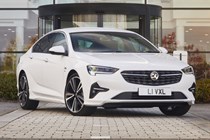
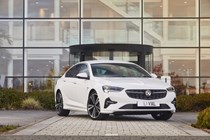
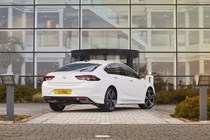
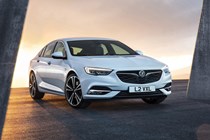
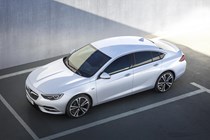
.jpg)
.jpg)
.jpg)
.jpg)
.jpg)
.jpg)
.jpg)
.jpg)
.jpg)
.jpg)
.jpg)
.jpg)
.jpg)
.jpg)
.jpg)
.jpg)
.jpg)
.jpg)
.jpg)
.jpg)
.jpg)
.jpg)
.jpg)
.jpg)
.jpg)
.jpg)
.jpg)
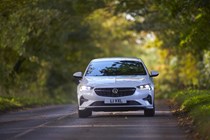
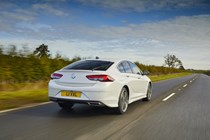
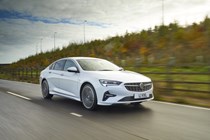
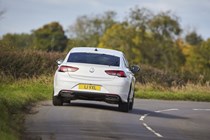
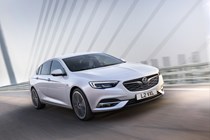
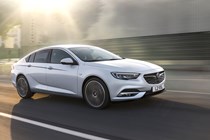


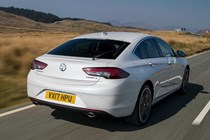
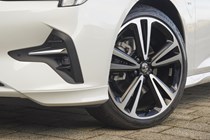
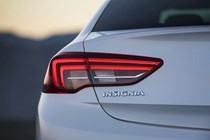
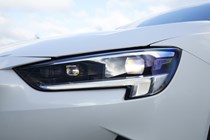
.jpg)
.jpg)
.jpg)
.jpg)
.jpg)
.jpg)
.jpg)
.jpg)
.jpg)
.jpg)
.jpg)
.jpg)
.jpg)
.jpg)
.jpg)
.jpg)
.jpg)
.jpg)
.jpg)
.jpg)
.jpg)
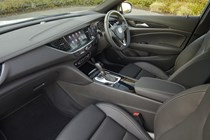
.jpg)


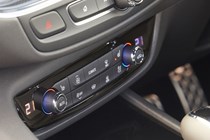
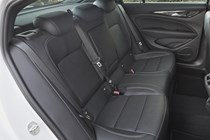

.jpg)
.jpg)
.jpg)
.jpg)
.jpg)
.jpg)
.jpg)
.jpg)
.jpg)
.jpg)
.jpg)
.jpg)
.jpg)
.jpg)
.jpg)
.jpg)
.jpg)
.jpg)
.jpg)
.jpg)
.jpg)
.jpg)
.jpg)
.jpg)
.jpg)
.jpg)
.jpg)
.jpg)
.jpg)
.jpg)
.jpg)
.jpg)
.jpg)
.jpg)
.jpg)
.jpg)
.jpg)
.jpg)
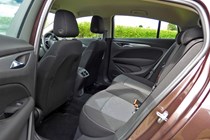
.jpg)
.jpg)
.jpg)
.jpg)
.jpg)
.jpg)
.jpg)
.jpg)
.jpg)
.jpg)
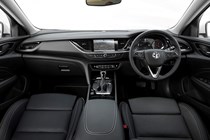
.jpg)
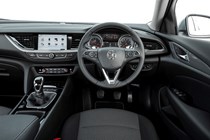
.jpg)
.jpg)
.jpg)
.jpg)
.jpg)
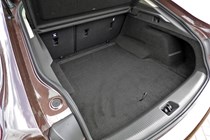
.jpg)
.jpg)
.jpg)
.jpg)
.jpg)
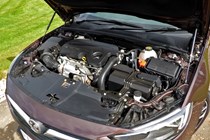
.jpg)
.jpg)

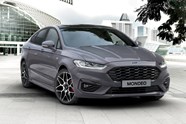
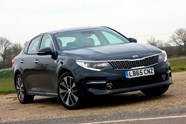





.jpg?quality=50)
.jpg?quality=50)
.jpg?quality=50)
.jpg?quality=50)
.jpg?quality=50)
.jpg?quality=50)
.jpg?quality=50)
.jpg?quality=50)
.jpg?quality=50)
.jpg?quality=50)
.jpg?quality=50)
.jpg?quality=50)
.jpg?quality=50)
.jpg?quality=50)
.jpg?quality=50)
.jpg?quality=50)
.jpg?quality=50)
.jpg?quality=50)
.jpg?quality=50)
.jpg?quality=50)
.jpg?quality=50)
.jpg?quality=50)
.jpg?quality=50)
.jpg?quality=50)
.jpg?quality=50)
.jpg?quality=50)
.jpg?quality=50)












.jpg?quality=50)
.jpg?quality=50)
.jpg?quality=50)
.jpg?quality=50)
.jpg?quality=50)
.jpg?quality=50)
.jpg?quality=50)
.jpg?quality=50)
.jpg?quality=50)
.jpg?quality=50)
.jpg?quality=50)
.jpg?quality=50)
.jpg?quality=50)
.jpg?quality=50)
.jpg?quality=50)
.jpg?quality=50)
.jpg?quality=50)
.jpg?quality=50)
.jpg?quality=50)
.jpg?quality=50)
.jpg?quality=50)

.jpg?quality=50)





.jpg?quality=50)
.jpg?quality=50)
.jpg?quality=50)
.jpg?quality=50)
.jpg?quality=50)
.jpg?quality=50)
.jpg?quality=50)
.jpg?quality=50)
.jpg?quality=50)
.jpg?quality=50)
.jpg?quality=50)
.jpg?quality=50)
.jpg?quality=50)
.jpg?quality=50)
.jpg?quality=50)
.jpg?quality=50)
.jpg?quality=50)
.jpg?quality=50)
.jpg?quality=50)
.jpg?quality=50)
.jpg?quality=50)
.jpg?quality=50)
.jpg?quality=50)
.jpg?quality=50)
.jpg?quality=50)
.jpg?quality=50)
.jpg?quality=50)
.jpg?quality=50)
.jpg?quality=50)
.jpg?quality=50)
.jpg?quality=50)
.jpg?quality=50)
.jpg?quality=50)
.jpg?quality=50)
.jpg?quality=50)
.jpg?quality=50)
.jpg?quality=50)
.jpg?quality=50)

.jpg?quality=50)
.jpg?quality=50)
.jpg?quality=50)
.jpg?quality=50)
.jpg?quality=50)
.jpg?quality=50)
.jpg?quality=50)
.jpg?quality=50)
.jpg?quality=50)
.jpg?quality=50)

.jpg?quality=50)

.jpg?quality=50)
.jpg?quality=50)
.jpg?quality=50)
.jpg?quality=50)
.jpg?quality=50)

.jpg?quality=50)
.jpg?quality=50)
.jpg?quality=50)
.jpg?quality=50)
.jpg?quality=50)

.jpg?quality=50)
.jpg?quality=50)